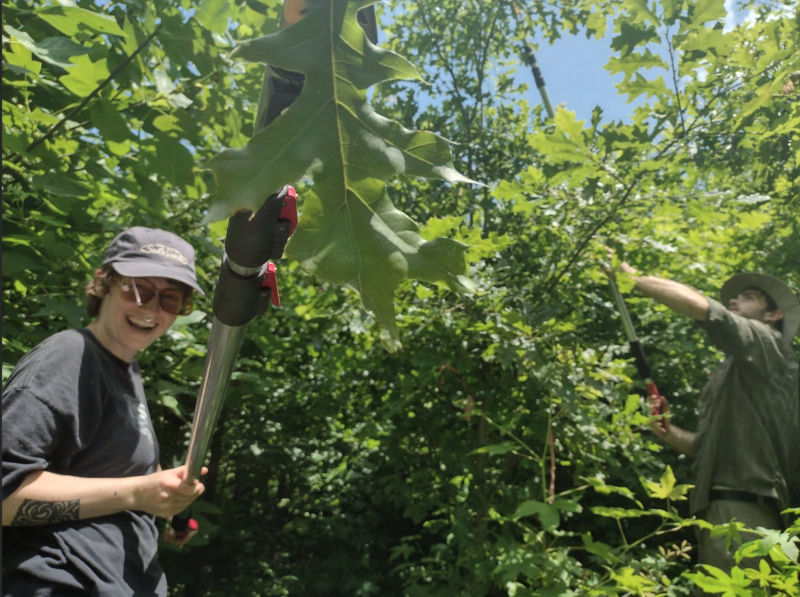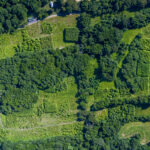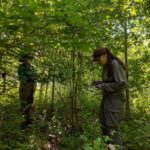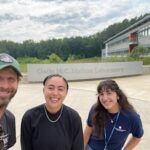
Dr. Eric Griffin, professor of Environmental Studies at Warren Wilson College, has joined four other lead scientists in a $1 million National Science Foundation grant to study tree diversity at the Smithsonian Environmental Research Center tree restoration experiment.
The experiment, called BiodiversiTREE, studies forest response to climate change from the molecular to the watershed level. It is a project that will last for more than 100 years and is the largest of its kind in North America.
The grant allows Griffin to explore whether soil and leaf microbes affect enemies attacking trees, including leaf insects and pathogens. The research has many implications for understanding forests and forest management, particularly as the earth’s climate is changing rapidly.
“We are looking at how important tree diversity is in ecosystem function, which has important implications for forestry management and carbon sequestration,” Griffin said. “We’ve already established that tree diversity increases, leaf pathogens go down. The data suggests that high tree diversity is very helpful in the protection from harmful pathogens.”
As part of the grant, Griffin created an internship program that funds Warren Wilson students to travel to the Smithsonian site to help conduct research. Senior Kaia Adams and junior Jason Kern spent the summer collecting leaf samples and measuring how different trophic levels (soil microbes, leaf microbes, insects, leaf chemistry) interact and impact forest health.
“The project we were working on had so many different moving parts and I appreciated getting to work with different groups on their specific focuses as well,” Kern said. “It was also really nice to meet other interns that were interested in similar fields. I’d definitely recommend the experience to anyone who wants to go down a path in the natural sciences.”
Adams studied soil pathogens that cause root rot on trees. She plans to use the research in her senior capstone research project at Warren Wilson, which is called a Natural Science Undergraduate Research Sequence (NSURS). All Warren Wilson, students in every academic department are required to do a senior research project.
Griffin said when he began his studies as a postdoc at the Smithsonian Environmental Research Center tree restoration experiment, he expected more diverse tree plots would harbor more diverse fungi. But the opposite proved true. When his team dug deeper, they discovered it was the harmful, disease-causing fungi that were less abundant inside the leaves of diverse plots.
The group plans to publish papers, present data, and work with companies and nonprofit organizations to articulate the findings to landowners, organizations and other stakeholders.
“This project has great potential to educate landowners and managers about how important forest diversity is to the function of entire ecosystems — particularly during an era when these biomes are critical in helping sequester carbon and buffer some of the harmful effects of climate change,” Griffin said.
See more at BiodiversiTREE: https://serc.si.edu/research/projects/biodiversitree.





